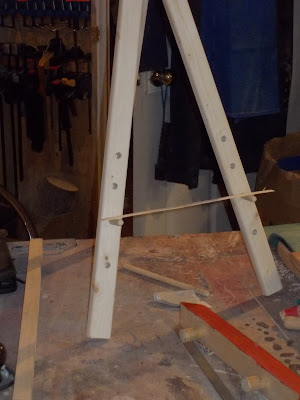 |
| new easel on the right |
After I got the commissioned easel make I decided to make one from my self. Mine is made from:
 |
| from this: |
One of the car load of 2 x 4's that I brought home a few weeks ago from our kids house. The board was weathered and a bit twisted but after I cut it to length on my mitre saw, joined one face and one edge, then ran it through the planer and ripped it on the table saw:
 |
| to these: |
The only trick in making this....
The angle where the three pieces come together. To move the easel around, just undo the bolt at the top.
cheers, ianw
























